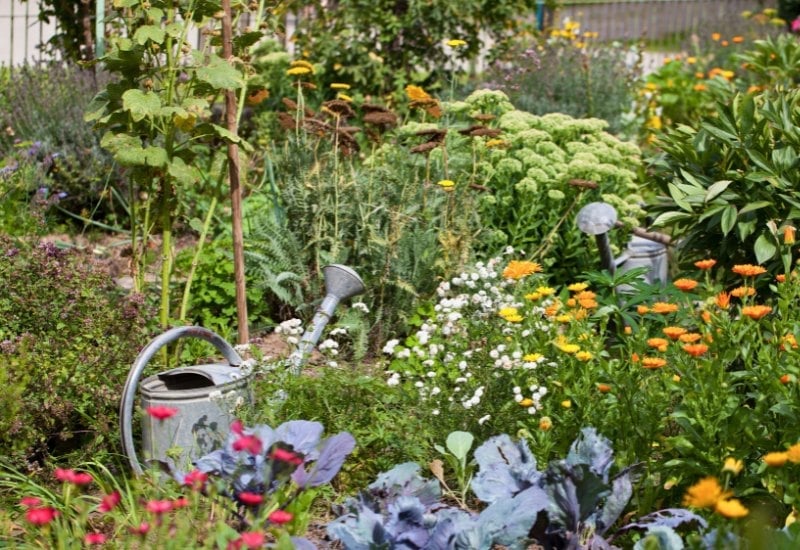
Is your garden struggling along in a bed of sandy soil? Maybe the problem isn’t with your soil, but with the plants you are trying to grow. Each plant does best with different soil types, and there are countless vegetables, herbs, flowers, and even fruit trees that thrive in sandy soil.
Sandy soil is loose, warm, and well-drained so the plants you grow should be suited to these conditions. Root vegetables, potatoes, alliums (onions), and many other vegetables like sandy soil. Many of the most flavourful herbs are from near-desert climates, and many fruits like strawberries, blueberries, plus apple, pear, and stone fruit trees. And don’t forget about all the sand-loving strawberries.
Keep reading to see dozens of plants you can grow in your sandy-soiled gardens.
What Is Sandy Soil
All soil on earth is made of three major types of soil: clay, silt, and sand. They are basically ground rock, that has been pulverized into different sizes of particles. Clay has the smallest particles, then silt, and sand is the largest particles. The “perfect” garden soil is a balance of all three in approximately equal proportions called loam. However, most of us do not have these ideal conditions, and we usually have more of one or the other. If you have more sand, then your soil is called sandy-loam or, if you have a lot of sand, then your soil is sandy.
Hopefully, none of our gardens are pure sand, otherwise, we would be like trying to garden on a beach which would be anexhausting and fruitless endeavour.
How To Tell If Soil Is Sandy

You can usually tell if you have sandy soil by how it feels. Sandy soil will feel gritty and coarse, and it will run through your fingers. If it is wet, sandy soil will not clump together but will stay quite crumbly.
An easy way totell the exact percentage of sand in your soil is to half fill a jar with soil from your garden and then fill the jar three-quarters full of water. Shake the jar vigorously and let it sit for a few days. The different types of soil (sand, silt, clay, organic matter) will settle into distinct groups so you can see how much sand you are dealing with.
What Sandy Soil MeansFor Plant
There are advantages and disadvantages to growing in sand. Sand is easy to work with good drainage, and warms quickly. Let’s look a little closer at what sand soil means for the plants in your garden.
Sand Has Good Drainage
Sand Is Loose
Sand Is Acidic
Sand Is Warm
However, there are many vegetables, herbs, trees, shrubs, and flowers that thrive in sandy locations all over the world. Plants that do well in sand like loose, well-drained soil and often like slight acidity.
Let’s take a look at the best plants to grow in a sandy garden.
Fruits And VegetablesThat Grow In Sandy Soil
There are several vegetables that do really well in sand, and they will thrive if you supply a healthy amount of compost.
Here are the best vegetables for sandy gardens:
1. Carrots

Every home vegetable garden should have carrots since there are few better snacks than a freshly harvested carrot, and carrots will grow almost everywhere. However, the looser your soil, the easier time the carrots will have sending out their large taproot.
If you have really sandy soil, try growing Manpukuji carrots, which can grow to be several feet long and need a loose bed to sink down into.
What About Parsnips? You might think that because carrots and parsnips look the same, they need the same growing conditions. But while parsnips will grow in sandy soil, they generally prefer a more nutrient rich environment of loam.
2. Beets
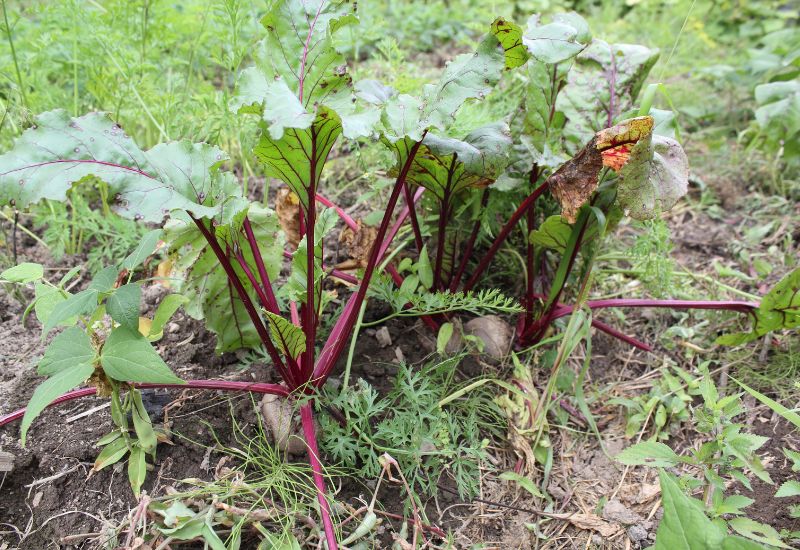
Just like carrots, beets like loose sandy loam soil that does not inhibit their root formation. Many gardeners find that heavy soil causes the roots to become tough so a light sand is ideal.
They also like lots of organic matter so make sure to add lots of compost prior to sowing.
Don’t forget that beet greens also taste excellent and are very healthy.
3. Radishes

While radishes seem small, they still send down an impressively long tap root so they prefer slightly sandy soil so they can really stretch out.
If you are not a huge fan of the spicy root, leave the radishes to fully mature. They will grow into huge plants with masses of small blossoms (that attract bees and hummingbirds) that finally turn into tasty seed pods with the classic radish flavour without the heat.
4. Turnips And Rutabagas

Like all other root vegetables, turnips and rutabagas grow fine, large taproots in loose sandy soil. And like the other roots, their green tops are edible and very healthy and tasty.
5. Potatoes

I remember my grandpa telling me a story of growing potatoes in the heavy soil of their Saskatchewan farm in the 40s. The drought brought hard packed land riven with large cracks. The potatoes couldn’t penetrate the hardpack, so they grew in the cracks. The result: thin, flat pancake-shaped potatoes.
Potatoes do far better in loose sand than they do in hard-packed clay. While potatoes are not a true root vegetable (they are a tuber), the harvestable crop is still produced underground, and the loose sand lets them spread and grow.
An important fact to remember when growing potatoes in sand is that a potato is around 79% water. If the sandy soil dries out, the potatoes will not develop well so make sure to provide adequate and consistent water.
6. Sweet Potatoes
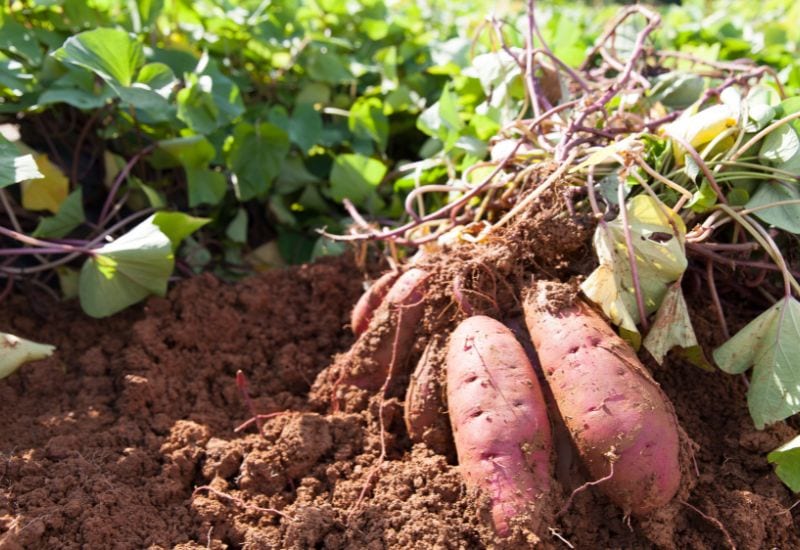
While almost every climate can grow potatoes, sweet potatoes require a little more heat than regular spuds. Sweet potatoes do not do well in damp soil as they rot very easily, and they need lots of heat to grow.
Sweet potatoes prefer well-drained, loose, warm soil that is slightly acidic. Perfect for the sandy garden.
7. Onions
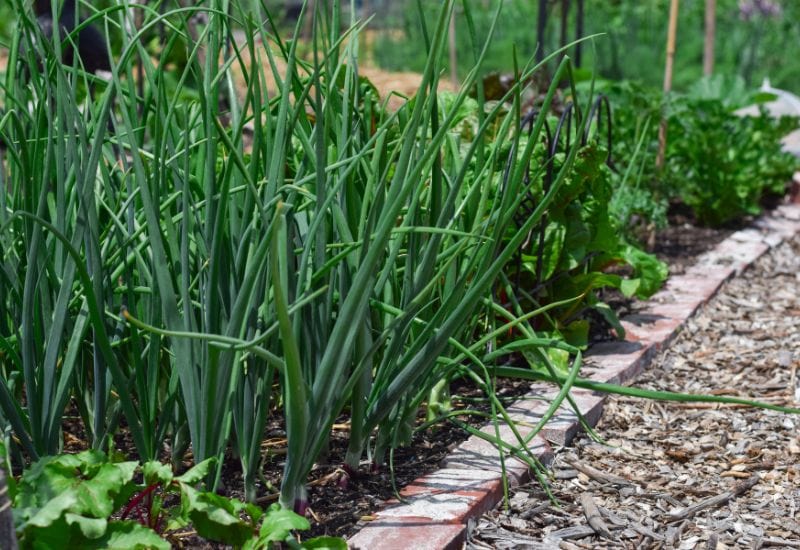
Onions are part of the Allium family. They grow well in most conditions, but their favorite is well-drained loose sandy soil. Onions do prefer the soil pH more neutral between 6.0 and 7.0, so liming might be required if the soil is very acidic.
Onions also like lots of organic matter, so make sure you amend your soil with lots of compost in the spring.
Bulb onions are typically grown from sets planted in the spring but they can also be grown from seeds.
8. Scallions And Leeks
Scallions, also called green onions, and leeks prefer well-drained, loose soil that is slightly sandy. They are easier to grow than their bulb cousins but they still need lots of organic matter to grow big and healthy.
There are also many different varieties of ornamental Alliums that produce larger flowers than edible onions.
9. Garlic

Garlic is also a member of the allium (onion) family and they, too, like the conditions sandy soil offers. Garlic is typically grown from cloves planted in the fall as they take upwards of 10 months to mature into new bulbs.
Shallots, an onions-garlic hybrid, also do well in sandy soil.
10. Lettuce
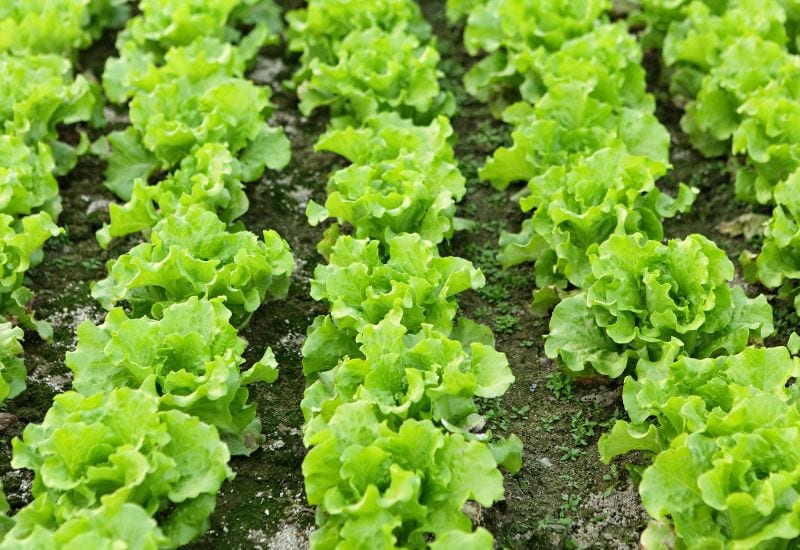
Lettuce does not germinate when the soil is over 22°C (72°F) so you might think it won’t like the warm sand. However, the early warming of sandy soil lets you get in a very early crop of this staple vegetable.
Lettuce will grow very well in sandy soil. However, lettuce is over 95% water and it requires a consistent supply of moisture or it will wilt. Make sure to regularly water your lettuce and it will thrive in your sandy garden.
11. Collard Greens

Collard greens are another leafy vegetable that does well in sandy soil. They like a slightly acidic condition between 6.0 and 6.5, and they are both frost hardy and tolerant of heat. While some growers say that heavy soil produces a larger yield of collard greens, their ability to withstand cold makes them ideal as sandy soil will be ready to plant earlier in the spring.
12. Sorrel
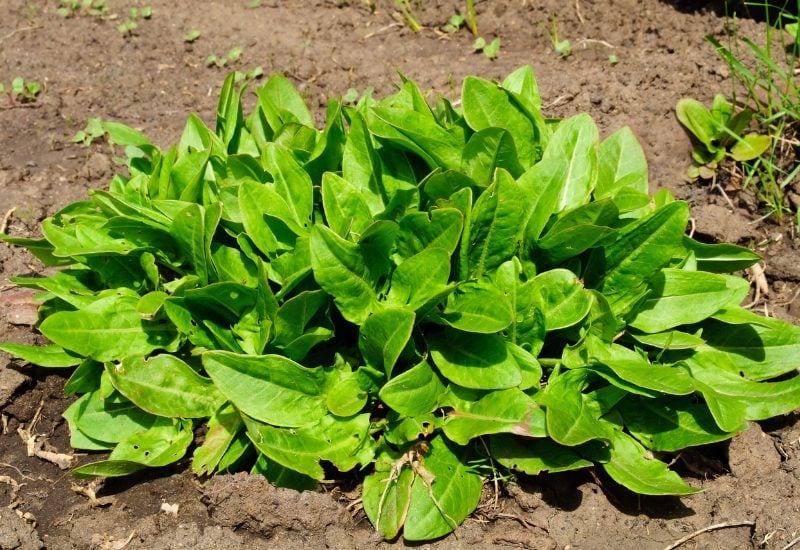
Sorrel could easily be listed as a vegetable or an herb since it is often used as both and is well known for its lemony flavour. However you use it in the kitchen, it grows very well in sandy soil. It will really grow anywhere in most conditions, but it prefers acidic sandy soil.
13. Tomatoes

Warm sandy soil works well for heat loving tomatoes, and the plants have fairly extensive roots that can really spread out in loose sandy soil.Tomatoesare, however, heavy feeders so make sure to enrich the soil with lots of organic matter.
When growing tomatoes in sandy soil, make sure to provide consistent moisture, as inconsistent watering can lead to blossom end rot, and well-draining sandy soil is particularly susceptible to drying out.
14. Corn
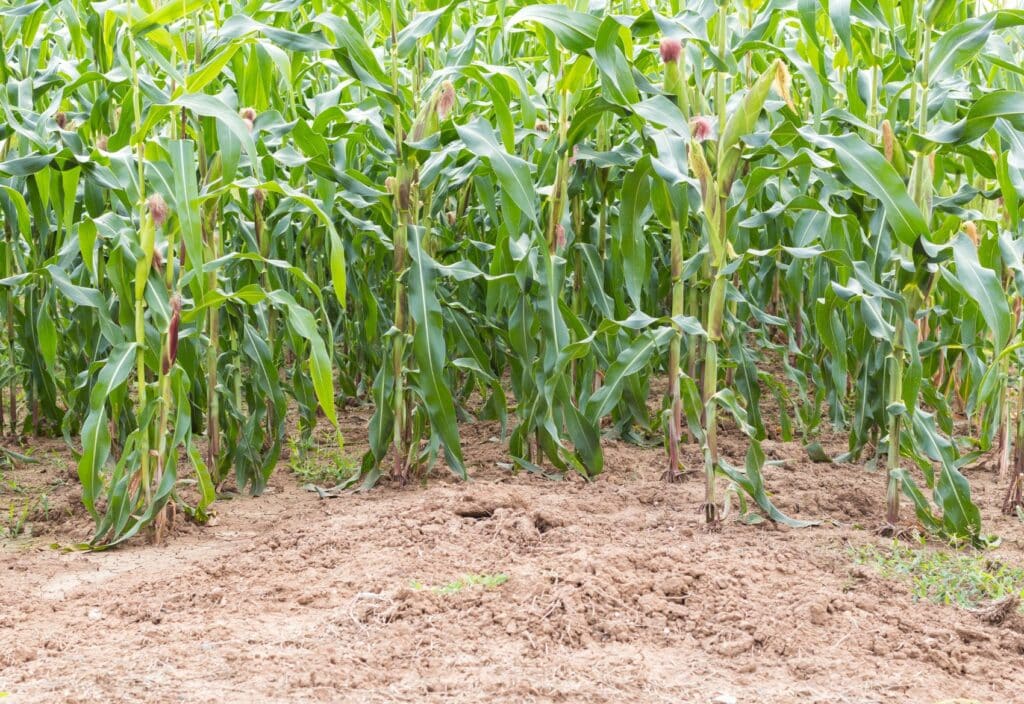
Corn can tolerate a variety of different soil conditions including sandy soil. Corn needs heat, so the early warming nature of sand is ideal to get your crop in on time. Corn also prefers a pH between 5.5 and 7.0 so it is well suited for acidic sand. Corn is a heavy feeder so make sure to add lots of compost prior to planting.
However, corn grown in sandy soil can suffer from magnesium deficiency so make sure to test your soil and amend it as needed.
Make sure to plant the corn 3.5cm to 5cm (1.5-2 inches) deep in warm, loose sand.
15. Asparagus

Asparagus is a perfect perennial for sandy soil. It needs loose, well drained soil to really thrive. Asparagus does not do well in overly acidic soil, so liming might be necessary, and don’t forget to add lots of compost and other organic matter.
16. Cucumbers

Cucumbers need a well drained warm soil, so sandy conditions are perfect.Try to keep the soil evenly moist, so consider an organic mulch to conserve moisture and reduce the need to water. They are heavy feeders so make sure to add lots of compost.
17. Sweet Alyssum

While this is actually a flower, it should be included in the vegetable section for its amazing benefits as a companion plant. It attracts beneficial insects and is also an excellent green manure cover crop that can be tilled in to add organic matter and further improve the sandy soil.
18. Strawberry

Deep, sandy loam soils are perfect for strawberries. The more fertility, they better the yield so amend with lots of compost. Strawberries also need lots of moisture, so make sure you monitor the sandy soil so it doesn’t dry out. Try a straw mulch for extra moisture retention.
19. Blueberries

Blueberries are difficult to establish, but you will give them the best start with a fertile, sandy soil. Also, blueberries really like acidic soil (down to pH 5.0), so the acidity of sandy soil is ideal.
20. Melons
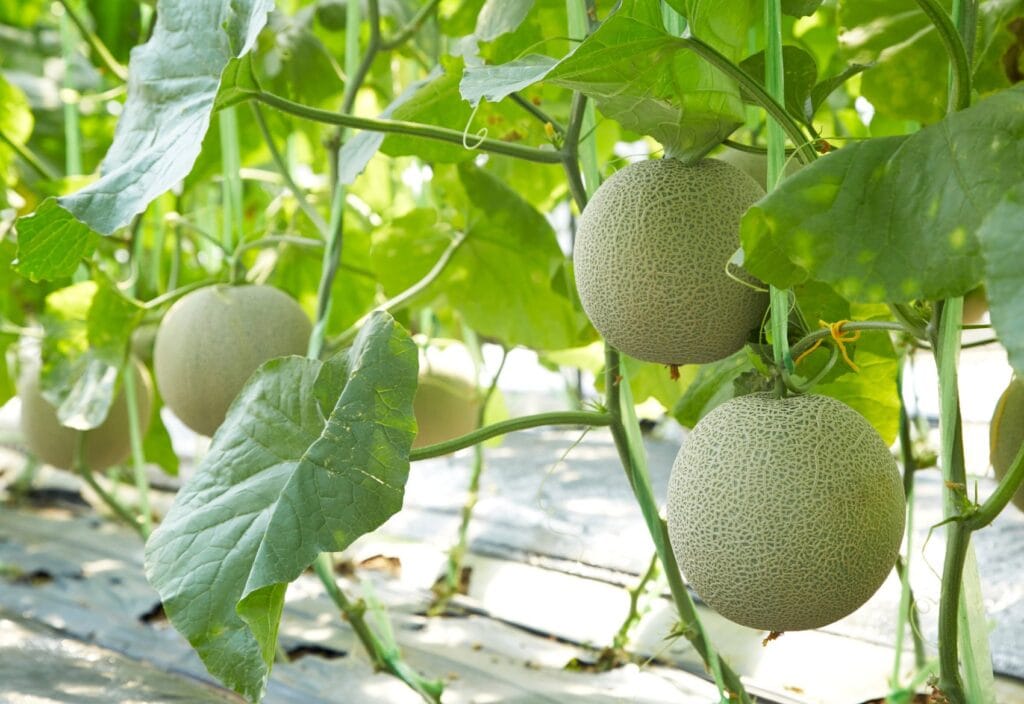
Melons struggle in heavy wet soils, so a sandy soil is perfect for these vining fruits. They also like warmth, so make sure to plant them in full sun.
21. Grapes

Many growers suggest that the ideal soil for grapes contain up to 50% sand, so if your garden is sandy try growing these deciduous woody vine. There three main groups of grapes: European, American, and French-American, and many varieties of each type. On the whole, European grapes grow best in Mediterranean like sandy soil, but other varieties will still do well in sandy gardens.
Herbs For Sandy Soil

Many of the herbs we enjoy in our culinary creations originate from the Middle East, or from the Mediterranean where conditions are often naturally sandy. These sand-loving herbs like well drained, warm soil. Here are some of the best herbs to grow in sandy soil:
Trees And Shrubs For Sandy Soils
Trees grow all over the world in all conditions. If your soil is sandy, do not worry: trees grow all over the world in all conditions and there are a number of trees you can grow in your sandy garden.
1. Fruit Trees
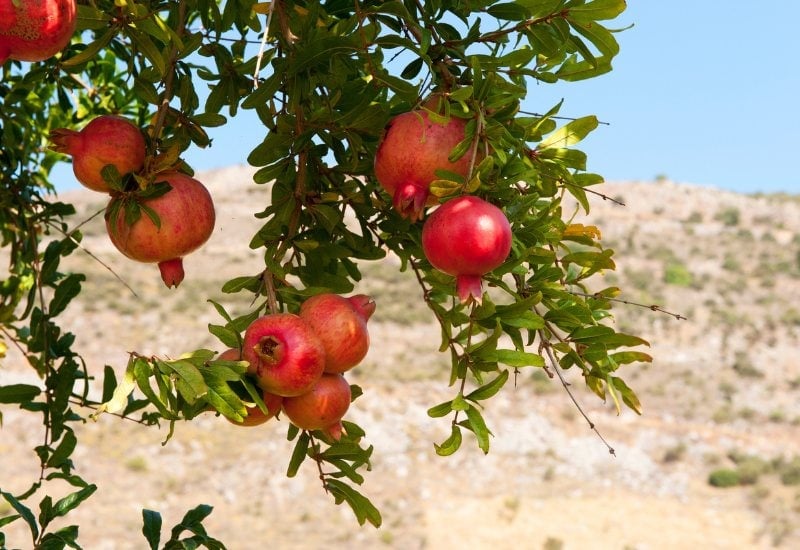
Many nurseries suggest growing fruit trees in fertile sandy, or sandy-loam, soil. Remember they need lots of fertility and moisture to bear fruit so add compost and mulch every year. This goes for both soft fruits and stone fruits including apple, pear, nectarine, peach, apricot, plums, cherry, pomegranates, persimmons, citrus, mulberry, and olives (yes, they are a fruit).
2. Caragana
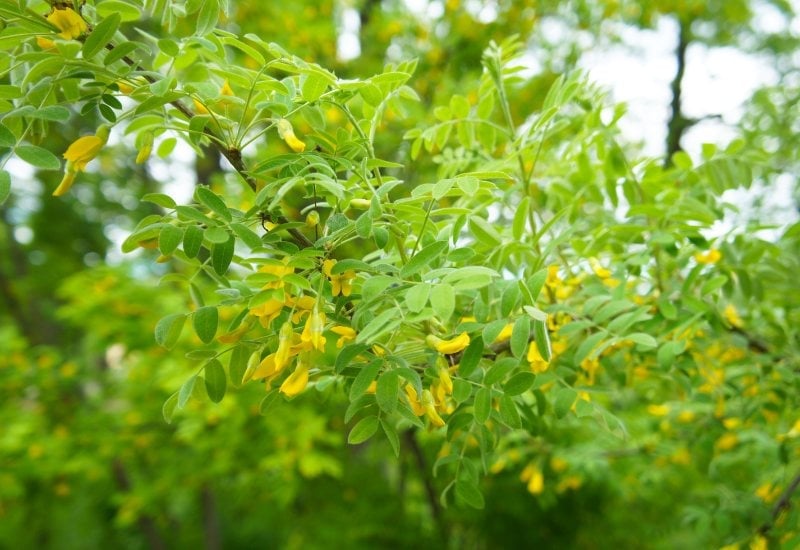
The Siberian Pea Shrub (or Tree), or more commonly known as the caragana, is a common sight in shelter belts across much of North America and the rest of the world. They are well suited to sandy soil, and are actually a legume which will fix nitrogen into the soil. They produce beautiful yellow flowers that turn into pods which later burst and fall to the ground.
3. Rose Of Sharon

The Rose of Sharon is a bush with beautiful flowers that can be grown almost anywhere, including acidic sandy soil. They are realitively easy keeps and can survive droughts, but they usually need regular watering to produce those amazing blooms.
4. Mimosa (Silk Tree)

This heat loving tree grows well in sandy soil, and will reach an impressive height in just a few years. You will also be rewarded with unique pink flowers.
5. Eucalyptus

Eucalyptus trees are from Australia, so they love heat and sand. They can read impressive heights of 45 meters (150 feet) so you probably won’t want to climb them unless you are a koala.
Popular Flowers For Sandy Soil
Whether you incorporate beautiful blossoms amongst your vegetables or have them in a dedicated garden plot, here are some great flowers to grow in every sandy soil:
1. Agave
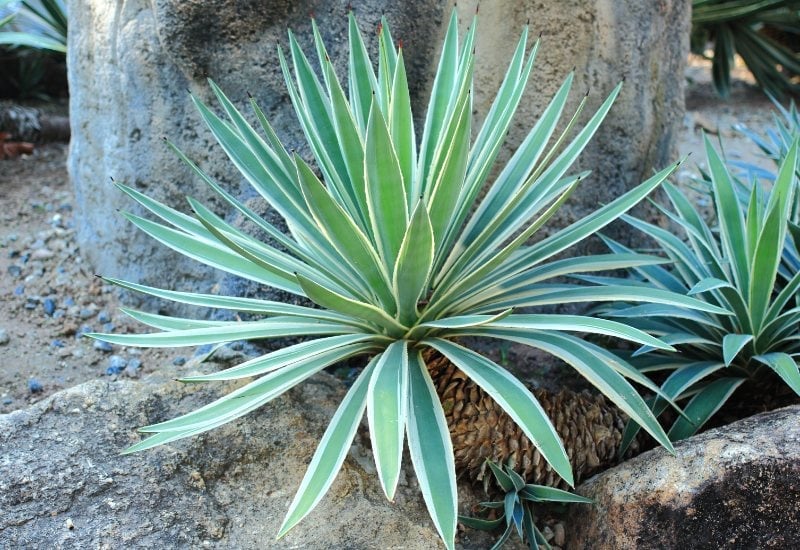
Popular for the sweet syrup you can buy in stores, there are many edible uses for this native of the Mexican desert. They do really well in sandy soil, and they require a warm, sunny climate. In the right conditions, they can grow very large.
2. Hens And Chicks
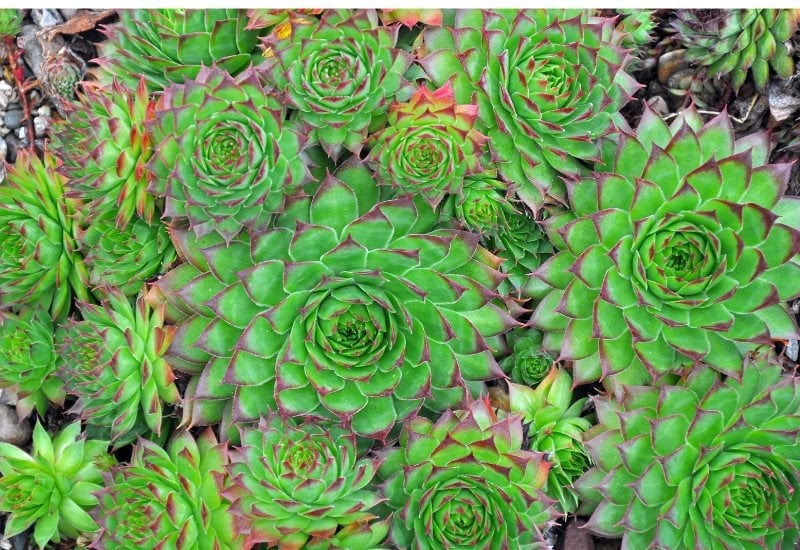
These incredibly hardy flowers are one of uor favorites in our garden. You can actually dump a bucket of sand on the ground, stick a few buds in, and you will have a whole patch of Hens And Chicks in a few years.
3. Artemisia

This sand loving ground cover is extremely drought hardy, so it is perfect for sandy soils that dry out quickly. They have a nice fragrance and are very soft and pretty.
4. Clover
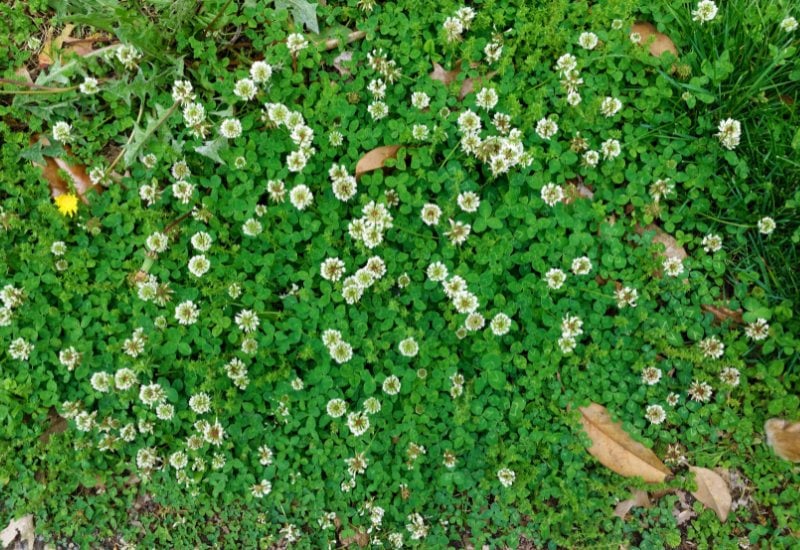
This common flower will grow just about anywhere, including sandy soil. They are a great soil builder as they fix nitrogen, and can be tilled under as a green manure to add fertility.
5. Sedum
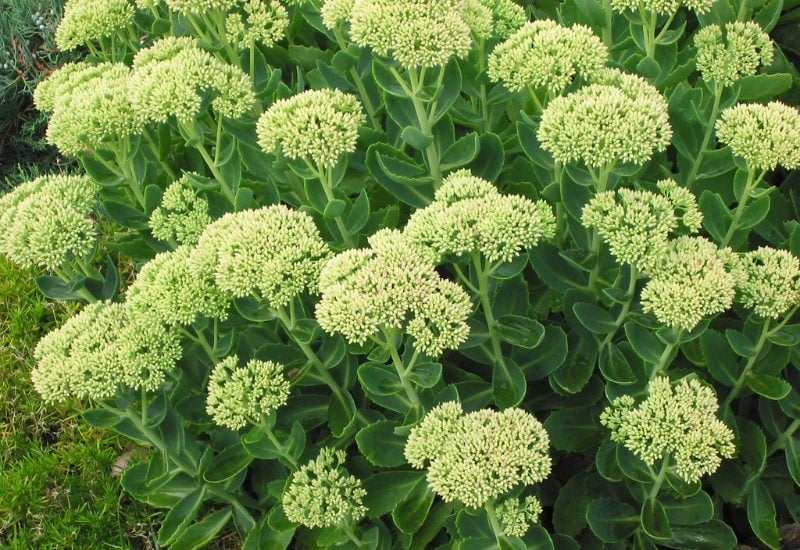
Sedum are small groundcovers that grow in sandy soil, and do very well in rock gardens. They are hardy to zones 3 to 9 so they can be grown in a variety of climates.
6. Cornflowers
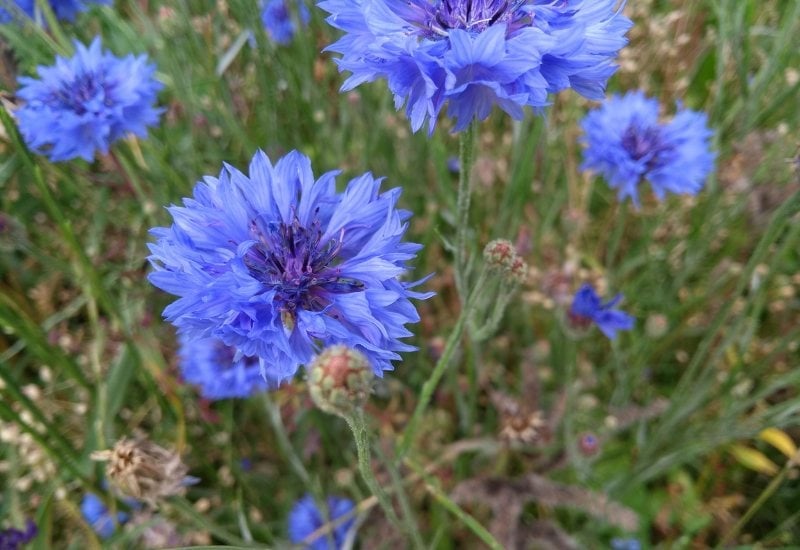
Cornflowers grow really well in loose, sandy soil. They are hardy from zones 2 to 11, so you can probably grow them no matter where you live. Most varieties make wonderful dried flowers (which you can harvest as they start to die so you do not steal nectar from pollinators) and once dried they will last for years in your house.
7. Cosmos

Cosmos are a great flower to grow as they are hardy from zones 2 to 11, they will often self seed, and they grow well in sandy soil.
8. Hosta

Hostas thrive in the shade, and also do well in sandy soil. They are listed for Zones 3 to 9, but they have survived for decades in our Zone 2 garden.
9. Black Eyed Susan
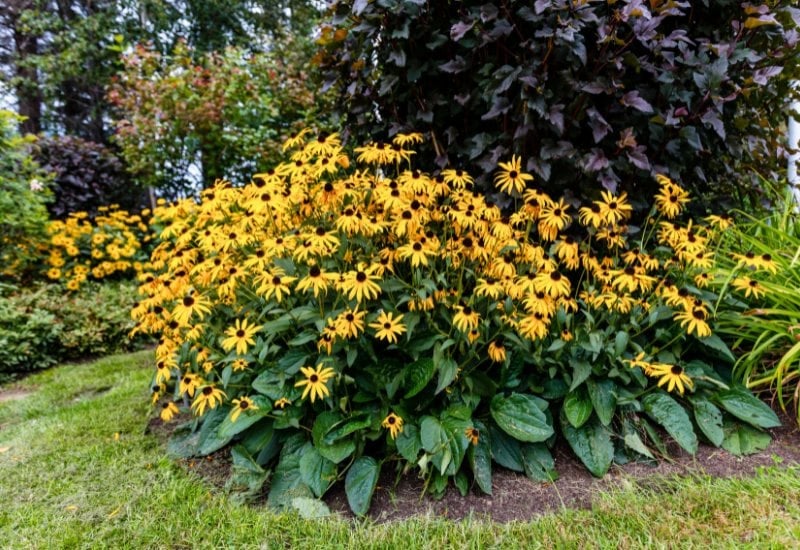
Black Eyes Susan are an easy to grow plant that makes black and yellow flowers.
10. Daylily
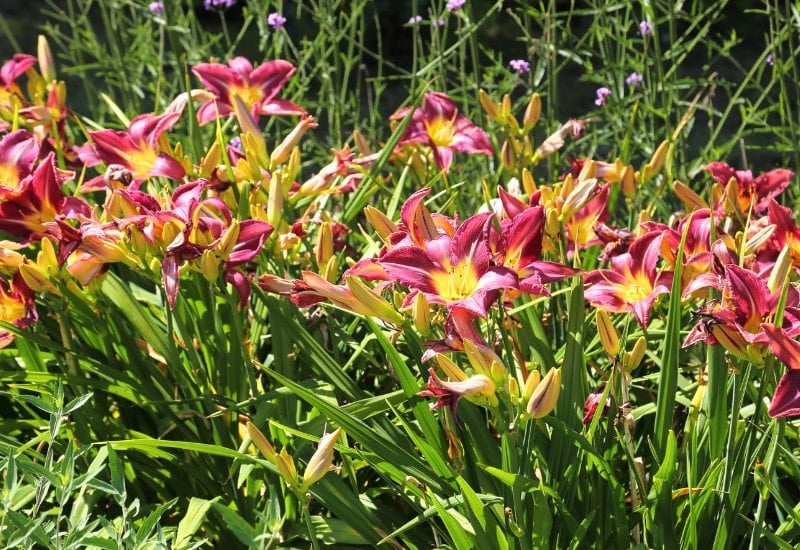
Daylilies are one of my favorite flowers, and they are very easy to grow and will keep coming back year after year even in cold climates. They are very hardy and do very well in sandy soil.
11. Wilflowers
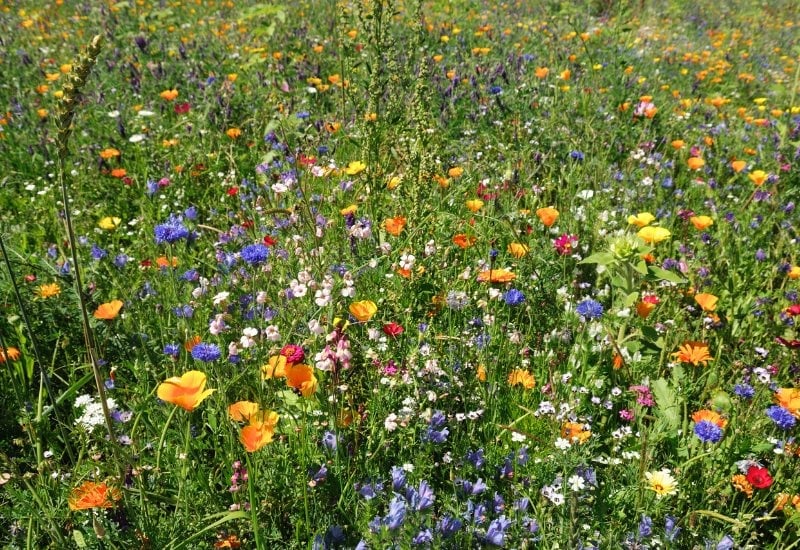
And don’t forget that many wildflowers grow very well, in low fertility and sandy soils.
12. Vines
I love vines in the garden. They add a wonderful vetical aspect to the landscape, and they are perfect for creating cozy nooks underneath their trellis. Here are some wonderful vines to grow in sandy soil:
Conclusion
We often have a negative stigma attached to sandy soil. In fact, we are often led to believe that unless our garden soil is perfect, then we might as well throw in the trowel. But the truth is, many plants are suited to a wide range of conditions, and sometimes having a garden that is less than ideal will force us to think outside the box to create a beautiful and unique garden that we would never have thought of otherwise. Have fun playing in the sand.

Written By
Amber Noyes
Amber Noyes was born and raised in a suburban California town, San Mateo. She holds a master’s degree in horticulture from the University of California as well as a BS in Biology from the University of San Francisco. With experience working on an organic farm, water conservation research, farmers’ markets, and plant nursery, she understands what makes plants thrive and how we can better understand the connection between microclimate and plant health. When she’s not on the land, Amber loves informing people of new ideas/things related to gardening, especially organic gardening, houseplants, and growing plants in a small space.
